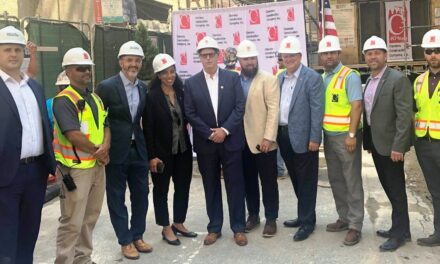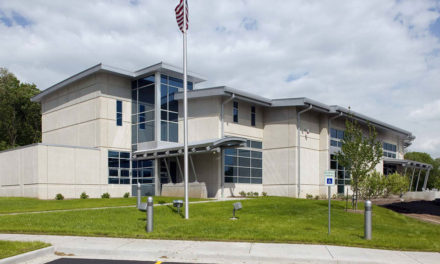The self-leveling concrete market is forecast to reach $6.22 billion by 2022 from $4.93 billion in 2017 at a CAGR of 4.7% during (2017-2022) driven by the increasing demand for self-leveling concrete from commercial and residential construction markets across regions and strong growth of the construction market in emerging economies such as China, India, and Brazil.
Browse 68 Market Data Tables and 32 Figures spread through 135 Pages and in-depth TOC on “Self-Leveling Concrete Market – Global Forecast to 2022” http://www.reportsnreports.com/reports/1157137-self-leveling-concrete-market-by-type-underlayment-and-toppings-end-user-residential-and-commercial-and-region-north-america-europe-asia-pacific-middle-east-africa-and-south-america-global-forecast-to-2022.html .
Europe is projected to lead the global self-leveling concrete market during the forecast period. The growth of the Europe self-leveling concrete market is mainly driven by the rise of the construction industry and increasing investments by private companies in the construction sector is anticipated to drive the Europe self-leveling concrete market. The self-leveling market in the Asia Pacific region is expected to grow at the highest CAGR from 2017 to 2022. This growth can be attributed to the high demand for self-levelling concrete from countries such as China, Japan, India, Taiwan, and South Korea in the Asia Pacific region.
The commercial is the largest end user segment of the global self-leveling concrete market. The application of self-leveling concrete in this sector covers construction of new buildings and non-building structures, renovations, and restructuring. Self-leveling concrete is used in making floor spaces, repair, and renovation of existing floors. The growth of retail spaces, educational institutions, industrial plants, restaurants, healthcare institutes, and others are anticipated to drive the self-leveling concrete market.
The research provides a comprehensive review of self-leveling concrete market drivers, opportunities, and challenges. It also discusses competitive strategies adopted by varied market players such as Ardex Group (Germany), Mapei S.p.A (Italy), Lafarge Holcim (Germany), Arkema Group (France), Saint-Gobain S.A. (France), Sika AG (Switzerland), USG Corporation (US), The Quikrete Companies (US), Duraamen Engineered Products, Inc. (US), Durabond Products Limited (Canada), Fosroc (UK), MYK Shomburg (India), Harricrete Ltd. (Trinidad and Tobago), Flowcrete (UK), Koster Bauchemie AG (Germany), Sakrete (US), Laticrete International, Inc. (US), CTS Cement (US), Dayton Superior Corporation (US), W.R. Meadows, Inc. (US), TCC Materials (US), Larsen Building Products (UK), Durex Coverings, Inc. (US), Edison Coatings Inc. (US) and ACG Materials (US).
The underlayment is the largest type segment of the global self-leveling concrete market. The underlayment type self-leveling concrete is widely used in commercial and residential buildings. Self-leveling underlayment provides smooth and accurate surfaces to a floor for covering. It also helps to minimize surface imperfections and irregularities to an existing surface. Government initiatives towards the development of public infrastructure, rapid industrialization, and growth of the residential construction market in emerging economies are anticipated to drive the underlayment type segment of the self-leveling concrete market.
Download a sample copy of this report at http://www.reportsnreports.com/contacts/requestsample.aspx?name=1157137 .
In the process of determining and verifying, the market size for several segments and sub segments gathered through secondary research, extensive primary interviews were conducted with key people. In Tier 1 (33%), Tier 2 (25%), Tier 3 (25%) and others (17%) companies were contacted for primary interviews. The interviews were conducted with various key people such as C-Level (51%), Directors (28%) and others (21%) from various key organizations operating in the global self-leveling concrete market. The primary interviews were conducted worldwide covering regions such as North America (27%), Europe (20%), AsiaPacific (40%), Middle East & Africa (6%), and South America (7%).
Research Coverage: The report defines, segments, and projects the global self-leveling concrete market on the basis of type, end user, and region. It provides detailed information regarding major factors influencing the growth of the market, such as drivers, opportunities, and industry-specific challenges. It strategically profiles key players, and comprehensively analyzes their market shares and core competencies as well as tracks and analyzes competitive developments, such as partnerships, contracts, and joint ventures, mergers & acquisitions, expansions, new product launches, and research & development activities in the market.
Another research titled Self-Compacting Concrete Market Global Forecast to 2026 says, the global self-compacting concrete market is projected to reach $15.18 billion by 2026, at a CAGR of 5.7% during the forecast period. The infrastructure segment is the largest end user segment of the global self-compacting concrete market. The powder type self-compacting concrete is the largest type of design mix segment in the global self-compacting concrete market. Asia-Pacific is leading the global self-compacting concrete market during the forecast period. Companies such as CEMEX S.A.B. de C.V. (Mexico), LafargeHolcim Limited (Switzerland), Tarmac (U.S.), Sika Group (Switzerland), BASF SE (Germany), ACC Limited (India) have been profiled in this 172 pages research report available at http://www.reportsnreports.com/reports/817818-self-compacting-concrete-market-by-type-powder-viscosity-combination-application-drilled-shafts-columns-metal-decking-concrete-frames-end-user-oil-gas-construction-infrastructure-building-construct-st-to-2026.html .
About Us:
ReportsnReports.com is an online market research reports library of 500,000+ in-depth studies of over 5000 micro markets. Not limited to any one industry, ReportsnReports.com offers research studies on agriculture, energy and power, chemicals, environment, medical devices, healthcare, food and beverages, water, advanced materials and much more.





